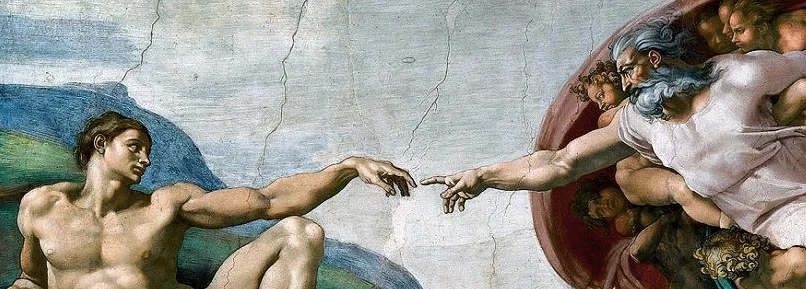The mystery of the two Creation stories: separating the HOW from the WHY
/By the Rev. Ken McClure
Peace and Love to you in Christ!
It's been some time since I last posted, largely because much has been happening here in the Parish of Haliburton! As the cold weather has firmly gripped hold, God has blessed and continues to bless this corner of the Kingdom, even while completely covering it with what can only be described as a mattress of snow.
One of the blessings has been our weekly Bible studies, where we have been entering into the text of Genesis, my favorite book of the Bible outside the Gospels (although it’s in a dead heat with Matthew, but that's another post).
We began ... well, at the beginning, examining the dual creation accounts given in the first two chapters, and took note of the distinctions between the two creations. There is comfort to be had in reading these two chapters closely, particularly if one has anxiety reconciling a Biblical faith with the understanding of the unfolding of the universe and the development of life that science has provided us in our modern context.
We need to take note of the conflicting sequences of creation in the two accounts, where the first (Gen. 1-2:4) has humanity created after everything else has been made, while the second (Gen. 2:4b-25) has Adam being formed "in the day that YHWH made the earth and the heavens, when no plant of the field was yet in the earth and no herb of the field had yet sprung up". The conflict in sequence continues when we see every creature created as an attempt to find a partner for Adam (Gen. 2:18-19).
While traditional attempts to align these two narrative have sought to connect the events of the second creation to the events of the sixth day in the first creation (Gen. 1:26-30) when humanity is created, this explanation cannot be found in the text, and must deviate from substantial portions of the text to be accepted. The two creations simply do not sequentially align.
None of this is to attempt to poke holes in the Biblical story, but to actually read what it says. When we do, we must consider the degree to which precision in developing the sequence of creation—what we consider the ‘how’ or timeline of creation—is of little importance to the Biblical text: if it was, the sequence established in the first would be maintained in the second.
All this is to say that we need not feel anxiety in opening ourselves up to scientific explanations for HOW the universe and life came into being, while affirming a Biblical faith. The Bible doesn't offer us a HOW: it offers us two HOWs, which means it's not about HOW, but WHY. When we look at the two creations for ‘why’, we see that they at last align!
WHY did God create?
Because God thought that it was good to create, and loved what was created, and created so that what was created could care for what was created.
The WHY is love.
Our understanding of the HOW has always been an unfolding process, a truth marked by the way the HOW changes in the first and second creations in Genesis. I have little doubt the understanding of the HOW we have now will seem just as limited tomorrow as yesterday's does today.
What remains fixed, is the WHY.
In the beginning, now, and evermore.









